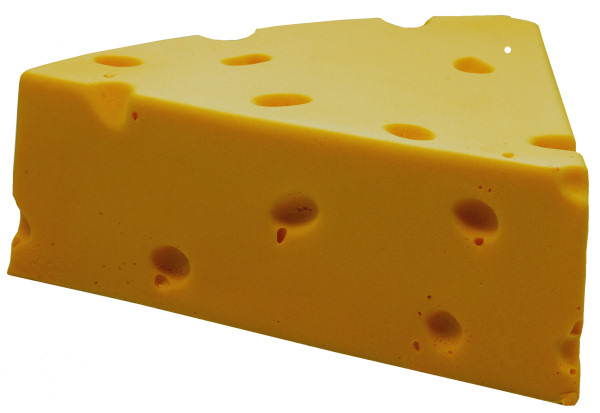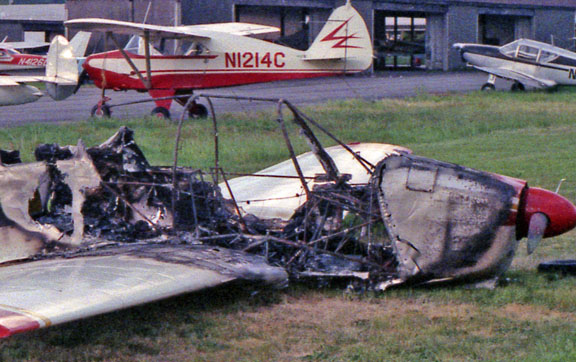You are using an out of date browser. It may not display this or other websites correctly.
You should upgrade or use an alternative browser.
You should upgrade or use an alternative browser.
Best Material to Provide Protection in a Airplane Crash
- Thread starter cocolos
- Start date
Turningfinal
Pre-takeoff checklist
- Joined
- Jun 20, 2013
- Messages
- 436
- Display Name
Display name:
Turningfinal
Silk!!



Sac Arrow
Touchdown! Greaser!
- Joined
- May 11, 2010
- Messages
- 20,353
- Location
- Charlotte, NC
- Display Name
Display name:
Snorting his way across the USA
Generally, airplanes aren't designed to absorb energy on impact like cars. I don't think either aluminum or fiberglass is advantageous over the other in a crash, and both will burn.
cgrab
Pattern Altitude
Nylon in the form of seatbelts or seatbelt mounted airbags.
cocolos
Pre-takeoff checklist
Generally, airplanes aren't designed to absorb energy on impact like cars. I don't think either aluminum or fiberglass is advantageous over the other in a crash, and both will burn.
Interesting. I guess there's no crunch zone in airplanes.
Capt. Geoffrey Thorpe
Touchdown! Greaser!
- Joined
- Jun 7, 2008
- Messages
- 15,637
- Location
- DXO124009
- Display Name
Display name:
Light and Sporty Guy
Steel tubing.
Airplanes are not, in general, designed for the 30 mph barrier impact test.
Airplanes are not, in general, designed for the 30 mph barrier impact test.
Clark1961
Touchdown! Greaser!
- Joined
- Jun 7, 2008
- Messages
- 17,737
- Display Name
Display name:
Display name:
Interesting. I guess there's no crunch zone in airplanes.
Some seats are designed to crush...seat belts, shoulder harnesses, air bags...
On spam cans the engine mount bolts straight to the firewall.
MAKG1
Touchdown! Greaser!
- Joined
- Jun 19, 2012
- Messages
- 13,411
- Location
- California central coast
- Display Name
Display name:
MAKG
I assume it's aluminum? Otherwise wouldn't we be using things like fiberglass on cars no? Just a thought. Any structural engineers around?
Some airplanes are made of composites. Fiberglass is an example. It's also used on some cars. It crunches very nicely….
Aluminum is largely about weight, cost and electrical conductivity. Not crash resistance. You could make a bulletproof airplane, but it would look a whole lot like a car. Twice the weight. Wouldn't fly that well.
colojo
Line Up and Wait
Silk!!


Well played, sir!
roncachamp
Final Approach
I assume it's aluminum? Otherwise wouldn't we be using things like fiberglass on cars no? Just a thought. Any structural engineers around?
It's one of these:

Cheesehead May Have Been A Lifesaver
Packers Fan Uses Foam To Protect Self During Plane Crash
RV10flyer
Pattern Altitude
I assume it's aluminum? Otherwise wouldn't we be using things like fiberglass on cars no? Just a thought. Any structural engineers around?
I am thinking I will install a silica aerogel cockpit injection system. Just pull the t-handle before impact and it will feel like a greaser.
I would try the Rams favorite food, but I don't think cream puffs would work very well.
ClimbnSink
Ejection Handle Pulled
- Joined
- Oct 11, 2007
- Messages
- 6,997
- Display Name
Display name:
Greg
Haha I was thinking ripstop nylon.
Silk!!


bnt83
Final Approach
There is dynamic crashworthiness regulations that newer aircraft were certificated to, but it doesn't make legacy aircraft any safer. Nor is it anything like automotive design.
Airbag seatbelts can be retrofit, not sure at what cost or continuing cost. A very small portion can be equipped with parachute.
GA is pretty sad in this aspect. I'd guess 80% of the GA fleet isn't even equipped with an appropriate fire extinguisher, maybe 20% doesn't even have shoulder harness. Wiring in them tends to be on the poor side too increasing risks of electrical fires.
I think in most crashes "crumple zones" wouldn't really be effective since it seems like there is always post crash fires in those accidents where it might help.
Airbag seatbelts can be retrofit, not sure at what cost or continuing cost. A very small portion can be equipped with parachute.
GA is pretty sad in this aspect. I'd guess 80% of the GA fleet isn't even equipped with an appropriate fire extinguisher, maybe 20% doesn't even have shoulder harness. Wiring in them tends to be on the poor side too increasing risks of electrical fires.
I think in most crashes "crumple zones" wouldn't really be effective since it seems like there is always post crash fires in those accidents where it might help.
Last edited:
frfly172
Touchdown! Greaser!
Crush zone,airbag technology, shock absorbing crush seats. Aircraft parachutes. All are making it safer,it's a long way before GA dips the new technologies. Still have the problem of fire on impact.
weirdjim
Ejection Handle Pulled
- Joined
- Jul 8, 2008
- Messages
- 4,171
- Location
- Grass Valley, CA (KGOO)
- Display Name
Display name:
weirdjim
txflyer
En-Route
- Joined
- May 3, 2013
- Messages
- 4,509
- Location
- Wild Blue Yonder
- Display Name
Display name:
Fly it like you STOL it ♦
Get a Meyers 200D.
They're built around a steel roll cage.
They have a rep for being able to walk away..
They're built around a steel roll cage.
They have a rep for being able to walk away..
RV10flyer
Pattern Altitude
Really?
.
Maybe he meant melts.
cowman
Final Approach
Metals will burn if you get a hot enough fire.
wanttaja
En-Route
Will aluminum sustain combustion if the heat source is removed? Seems like this would make welding difficult....Metals will burn if you get a hot enough fire.
Ron Wanttaja
airdale
Pattern Altitude
- Joined
- Dec 30, 2007
- Messages
- 1,840
- Display Name
Display name:
airdale
There are two separate issues here:I assume it's aluminum? Otherwise wouldn't we be using things like fiberglass on cars no? Just a thought. Any structural engineers around?
1) External injuries due to something poking a hole in you or your doing a face plant on the instrument panel. As several have mentioned, seat belts with shoulder harnesses are probably your best bet here.
2) Internal injuries due to rapid deceleration. For example, your brain hitting the inside of your skull or your spleen ripping loose from its moorings. Humankind has not evolved to be very resistant to rapid deceleration injuries because there is no evolutionary reason for it. Various sources give ranges from 25G to 75G as the point where an otherwise uninjured person will die. NHTSA uses 65G.
The point of crush zones is to reduce peak acceleration. But the numbers get big very fast. I recall reading that a 45mph car collision into a bridge abutment produces enough peak acceleration to kill.
Actually, the inside of a "crash" helmet is also a crush zone. The foam in there is designed to crush as a means to absorb the impact of the head hitting it. It is deliberately not resilient, because resilient foam doesn't absorb energy; it simply stores it temporarily and then delivers it back to the object that hit it.
When you see a NASCAR crash, you can be sure the driver is pretty well protected from things poking a hole in him. Seat, belts, interior design, etc. provide a lot of protection. When you see a car cartwheeling, sliding, spinning, etc. that is a good, slow, probably safe, crash. It is the sudden stops that kill.
So ... that is kind of a long way to say that protection isn't really as much about material as it is about design.
JohnF
Pre-Flight
Will aluminum sustain combustion if the heat source is removed? Seems like this would make welding difficult....
Ron Wanttaja
An aluminum (fuel) iron oxide (oxidizer) thermite reaction is aluminum burning.
Cessna's, Mooney's and Piper's are aluminum, but are not the best planes to crash in, why? Has nothing to do with the skin....Has everything to do with the 'crush box'.
What crush box? Flight Design has an advanced carbon fiber structure in current CT products called the 'egg'...it's a reinforced set of columns and shock resistant structures built around the cockpit.
The new C4 will have a 'crush box' similar to what modern cars have, couple that with the BRS chute system, and the design of the seats suspended on an impact absorbing carbon fiber seats and you can see why the carbon fiber plane is superior to the metal ones. And the option to have air bags in the seat belts.
http://flightdesignusa.com/2013/07/occupant-safety-crashworthiness-initiative/
What crush box? Flight Design has an advanced carbon fiber structure in current CT products called the 'egg'...it's a reinforced set of columns and shock resistant structures built around the cockpit.
The new C4 will have a 'crush box' similar to what modern cars have, couple that with the BRS chute system, and the design of the seats suspended on an impact absorbing carbon fiber seats and you can see why the carbon fiber plane is superior to the metal ones. And the option to have air bags in the seat belts.
http://flightdesignusa.com/2013/07/occupant-safety-crashworthiness-initiative/
Last edited:
Silvaire
En-Route
- Joined
- Oct 10, 2012
- Messages
- 4,612
- Display Name
Display name:
Silvaire
In normal use an automobile is constantly in motion at high velocity in very close proximity to stationary and other moving objects. In normal use an airplane is nowhere near any other object and so the chance of collision is small. If airplanes were forced to abide by typical NTSB crash worthiness tests like automobiles it's very unlikely they'd be airplanes anymore as they'd never get off the ground.
There are things that can and are being done such as shoulder harnesses, parachutes and air bags but most airplanes are, in this regard, similar to a 1960 Plymouth that originally probably didn't even have seat belts and still, to this day, is not required to have them if they weren't original equipment. Unlike airplanes there are very few 40 or 50 year old cars on the road.
There are things that can and are being done such as shoulder harnesses, parachutes and air bags but most airplanes are, in this regard, similar to a 1960 Plymouth that originally probably didn't even have seat belts and still, to this day, is not required to have them if they weren't original equipment. Unlike airplanes there are very few 40 or 50 year old cars on the road.
wanttaja
En-Route
Not likely to be a lot of iron oxide present in an aircraft crash (unless the flames get near my engine mountAn aluminum (fuel) iron oxide (oxidizer) thermite reaction is aluminum burning.
Ron Wanttaja
ClimbnSink
Ejection Handle Pulled
- Joined
- Oct 11, 2007
- Messages
- 6,997
- Display Name
Display name:
Greg
Bubble wrap is the answer. Or only crash into pillow factories.
weirdjim
Ejection Handle Pulled
- Joined
- Jul 8, 2008
- Messages
- 4,171
- Location
- Grass Valley, CA (KGOO)
- Display Name
Display name:
weirdjim
Metals will burn if you get a hot enough fire.
Metals in powder form perhaps. Metals in sheet not so much.
Jim
weirdjim
Ejection Handle Pulled
- Joined
- Jul 8, 2008
- Messages
- 4,171
- Location
- Grass Valley, CA (KGOO)
- Display Name
Display name:
weirdjim
An aluminum (fuel) iron oxide (oxidizer) thermite reaction is aluminum burning.
Only if both are reduced to powder or granular form. And, as I vaguely recall, will only start with an extremely hot magnesium ribbon fuse.
Jim
airdale
Pattern Altitude
- Joined
- Dec 30, 2007
- Messages
- 1,840
- Display Name
Display name:
airdale
OT: I had a friend who had a Ford GT40 "kit" comprising what was left of a burned car (s/n 104). Story was that the cars were overweight vs Le Mans minimums, so the firewall between the engine and the driver compartment was made of sheet magnesium. Apparently that piece burned quite nicely.Metals in sheet not so much.
JohnF
Pre-Flight
Not likely to be a lot of iron oxide present in an aircraft crash (unless the flames get near my engine mount.
Ron Wanttaja
 I was just answering the question of aluminum burning.
I was just answering the question of aluminum burning.So, airplane crash, remove all other fuel sources: No, aluminum won't burn in free air. (not even as a powder I believe. It has a high boiling point.)
And don't worry too much about that engine mount; not all that much oxidizer freely available there assuming it still hold an engine up.
Only if both are reduced to powder or granular form. And, as I vaguely recall, will only start with an extremely hot magnesium ribbon fuse.
Jim
Source of ignition isn't that important but it really has to be hot. A magnesium fire is really simple and cheap.
MAKG1
Touchdown! Greaser!
- Joined
- Jun 19, 2012
- Messages
- 13,411
- Location
- California central coast
- Display Name
Display name:
MAKG
Will aluminum sustain combustion if the heat source is removed? Seems like this would make welding difficult....
Ron Wanttaja
It will in a sufficiently oxygen enriched environment.
So will steel. That's essentially what an oxy cutter does.
If you've ever seen what a lava flow does to an aluminum (or steel, for that matter) engine block you would **** yourself. Not much left. Kilauea has eaten a few cars over the years.
Pedals2Paddles
Cleared for Takeoff
Adding 200lbs of extra steel to create a protected cabin, with crumple zones surrounding it, is easy on a vehicle that doesn't need to fly.
Cessna's, Mooney's and Piper's are aluminum, but are not the best planes to crash in, why? Has nothing to do with the skin....Has everything to do with the 'crush box'.
What crush box? Flight Design has an advanced carbon fiber structure in current CT products called the 'egg'...it's a reinforced set of columns and shock resistant structures built around the cockpit.
The new C4 will have a 'crush box' similar to what modern cars have, couple that with the BRS chute system, and the design of the seats suspended on an impact absorbing carbon fiber seats and you can see why the carbon fiber plane is superior to the metal ones.
http://flightdesignusa.com/2013/07/occupant-safety-crashworthiness-initiative/
Moonies have a tubular steel cage around the cabin. Very strong as are the wing spars. Has saved folks that would have died. Mooney has never had a in flight break up.
You really should what you are talking about before you spout off.
Sac Arrow
Touchdown! Greaser!
- Joined
- May 11, 2010
- Messages
- 20,353
- Location
- Charlotte, NC
- Display Name
Display name:
Snorting his way across the USA
Really?
.
Will aluminum sustain combustion if the heat source is removed? Seems like this would make welding difficult....
Ron Wanttaja
Sure, not as easily as magnesium but in crumpled sheet form or shredded strips it will. Regardless, just look at the fire damage in a typical airplane crash. Usually the aluminum around the tanks is gone. Not just melted, but burned up gone.
MooneyDriver78
En-Route
- Joined
- Aug 13, 2013
- Messages
- 4,541
- Display Name
Display name:
Tom
Whatever they used to make the black boxes 

Sac Arrow
Touchdown! Greaser!
- Joined
- May 11, 2010
- Messages
- 20,353
- Location
- Charlotte, NC
- Display Name
Display name:
Snorting his way across the USA
Whatever they used to make the black boxes
Titanium would probably make great structural tubular sections! (Now the covering...)
wanttaja
En-Route
Moonies have a tubular steel cage around the cabin.

(Ground fire, for those who are worried. No injuries.)
Ron Wanttaja
MAKG1
Touchdown! Greaser!
- Joined
- Jun 19, 2012
- Messages
- 13,411
- Location
- California central coast
- Display Name
Display name:
MAKG
Titanium would probably make great structural tubular sections! (Now the covering...)
Been done.
SR-71s leak like nothing else, though. Not cheap airplanes, either….
airdale
Pattern Altitude
- Joined
- Dec 30, 2007
- Messages
- 1,840
- Display Name
Display name:
airdale
That is certainly the advertising claim. From the pix I've seen (like http://i936.photobucket.com/albums/ad208/TheoFly/mooney-roll-cage.jpg) it's small diameter tubing with minimal triangulation. I wouldn't count on it for much. Really strong frames (like http://www.thekentlives.com/files/9613/3644/8720/SwiftChassis_512.jpg) are quite a different animal. Large diameter tubing, straight runs, lots of triangulation. Note in the second picture that the only missing triangulation and non-straight frame tubing is at the top of the driver compartment. The designer would have done that differently if it wasn't for needing the damned driver!Moonies have a tubular steel cage around the cabin. Very strong ...
MooneyDriver78
En-Route
- Joined
- Aug 13, 2013
- Messages
- 4,541
- Display Name
Display name:
Tom
Been done.
SR-71s leak like nothing else, though. Not cheap airplanes, either….
Fuel tanks leaked, but were designed that way, something about the heat generated causing expansion of the various parts, once it got up to speed, it stopped leaking.
